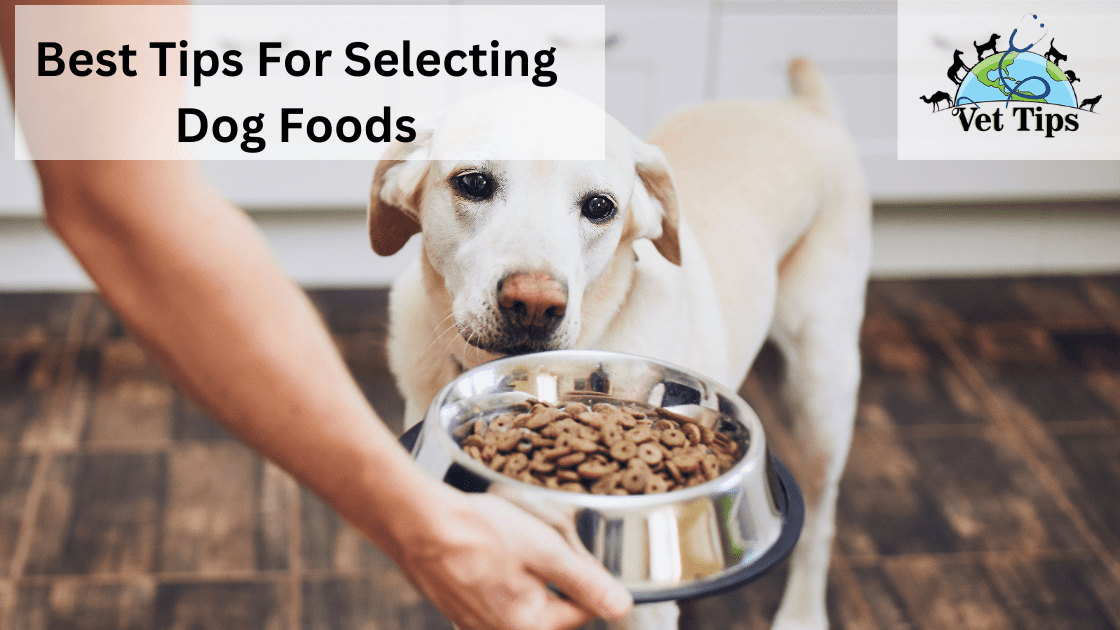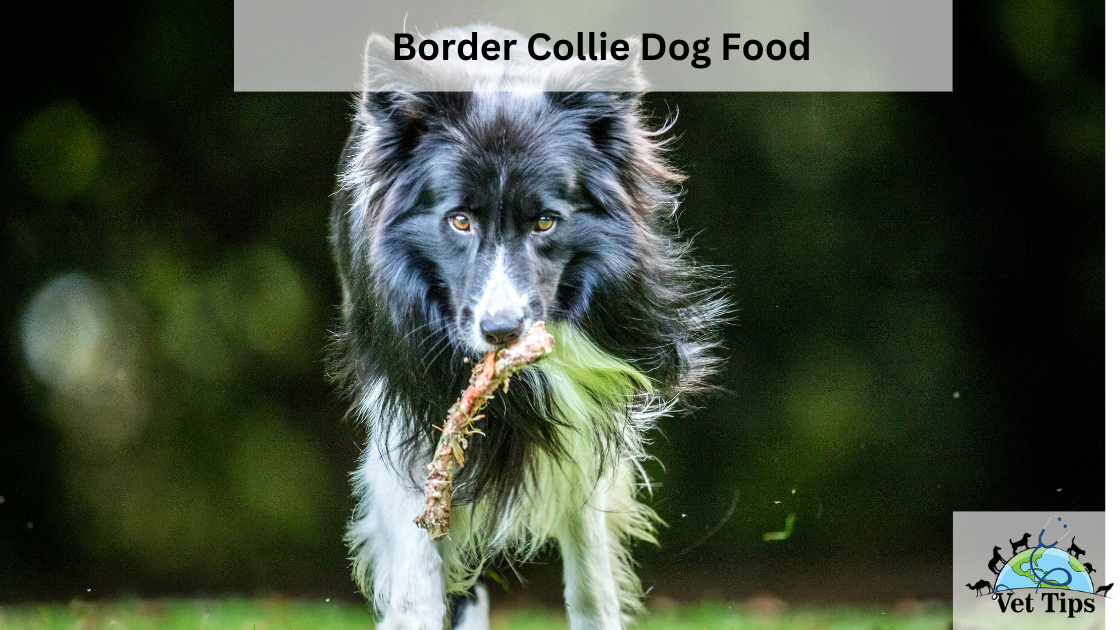If you care about your dog’s health and happiness, you need to give careful consideration to the kind of food you provide them. Finding the finest food for your dog may be a challenging endeavor due to the extensive number of products that are now on the market. Having said that, you are able to make an educated selection and provide your dog with a food that is both nourishing and well-balanced if you take into account a few essential variables and follow some advice from experts. In this article, we will go over some Best Tips For Selecting Dog Foods, so you can ensure that your four-legged pal gets the nutrients they require to be healthy and happy.
Best Tips For Selecting Dog Foods
1. Understand Your Dog’s Nutritional Needs
Every dog is an individual, and their dietary requirements may differ depending on a number of factors, including their age, breed, size, level of activity, and any preexisting medical concerns. Before choosing a diet for your canine companion, it is important to discuss the unique nutritional needs of your four-legged buddy with your trusted veterinarian. Because of this, you will be more equipped to select a diet that has the appropriate proportions of proteins, fats, carbs, vitamins, and minerals to support their general health.
2. Read and Understand the Ingredient List
When shopping for dog food, one of the procedures that is among the most crucial to take is to thoroughly study and comprehend the ingredient list. Keep an eye out for key components that include high-quality sources of protein like chicken, beef, or fish in the ingredient list. Steer clear of items that are labeled with unspecific or too general words such as “meat by-products” or “animal digest,” as they may point to substances of a poorer grade. Also, check to see if the meal contains important nutrients such as omega-3 fatty acids, antioxidants, and vitamins.
3. Consider Your Dog’s Age and Life Stage
Throughout the course of one’s life, their dietary requirements change. The nutritional needs of puppies, adult dogs, and older dogs are significantly different from one another. To make sure your dog is getting the right proportion of nutrients at every stage of their life, you should feed them a meal that has been developed especially for that time in their lives. When compared to senior dog food, puppy food often has a greater calorie and protein content since puppies are still growing and developing, whereas senior dog food may have a lower calorie content because older dogs tend to have lower activity levels.
4. Avoid Common Allergens or Sensitivities
Dogs, just like people, are susceptible to developing dietary sensitivities and allergies. Ingredients like wheat, maize, and soy, as well as specific types of protein like chicken and beef, are examples of common allergies that might affect dogs. Consider feeding your dog meals that are explicitly labeled as hypoallergenic or grain-free if you are aware that he or she suffers from allergies or sensitivities. You also have the option of doing an elimination diet with the assistance of your dog’s veterinarian in order to narrow down the potential list of allergen-inducing components that may be present in your dog’s food.
5. Research the Brand’s Reputation and Quality
It is essential to take into consideration the status and standing of the brand that produces the dog food as well as its quality. Look for brands that have a proven track record of manufacturing dog meals that are of a superior quality and have a nutritional profile that is well-rounded. Do your homework on the company’s production procedures, where its ingredients come from, and any quality problems or recalls it may have experienced in the past. If you choose a brand with a good reputation, you may have the peace of mind of knowing that you are providing a healthy and safe diet for your dog.
More about Best Tips For Selecting Dog Foods
6. Evaluate Your Budget
While it’s important to prioritize your dog’s nutrition, it’s also necessary to consider your budget. There is a correlation between the pricing of high-quality dog meals and the quality of the components that they include as well as the nutritional profiles that they provide. However, there are alternative solutions available that are kind to your wallet and can still fulfill the fundamental nutritional requirements of your dog. Find a happy medium between the price and the quality of the dog food you buy by making sure it doesn’t break your bank but yet gives your pet the nourishment it needs while staying within your financial constraints.
7. Observe Your Dog’s Response
After you have decided on a meal for your dog, pay close attention to how he reacts to eating it. Be on the lookout for indications that the animal’s digestion, energy levels, and overall well-being have improved. Talk to your veterinarian if you experience any unfavorable responses or ongoing health problems if you have any concerns. Keep in mind that not all dogs will react in the same way to a certain kind of dog food, so it may take some time and a little bit of trial and error to locate the kind of food that is ideal for your four-legged buddy.
8. Consider Wet or Dry Food Options
Wet and dry food are the two primary categories that make up dog food. Food that is considered to be “wet” often comes in cans or pouches and contains a greater amount of water. It is possible that dogs with dental difficulties or those who favor a softer texture would benefit from it. Kibble is the most common form for dry food, which also has the advantage of being simpler to both store and prepare. Chewing can also contribute to the preservation of dental health since it encourages chewing. Some people who own dogs choose to feed their pets a mixture of wet and dry food in order to satisfy their pets’ need for diversity while also satisfying their own.
9. Ask Others for Suggestions and Ensure You Do Your Own Research
Do not be afraid to ask for suggestions from reliable sources, such as your veterinary professional, other people who own dogs, or respected online forums that are dedicated to the care of pets. The knowledge and experiences that they have to offer might be of great assistance to you as you search for the ideal diet for your canine companion. In addition, devote some of your time to doing research and making comparisons between various products, as well as reading reviews and educating yourself on the most recent developments in canine nutrition. The more knowledgeable you are, the more equipped you will be to make a choice that is well-informed and appropriate for the circumstances.
10. Make the Changes in Baby Steps
It is crucial to make sure the transition from the previous meal to the new food is done in a gradual manner whenever you give your dog a new diet. Alterations in nutrition made all of a sudden might provoke digestive distress, such as nausea and vomiting. Start by combining a tiny quantity of the new food with the old meal, and then over the course of several days, gradually increase the amount of the new food that you are using. This gradual shift gives your dog’s digestive system time to acclimate, which lessens the likelihood of any digestive upsets occurring.
Problems with commercially prepared food
- Fact: long term commercial food will become biochemical cripples with no resistance to disease.
- Commercial food lack almost 30 nutrients.
- They add preservatives to enhance shelf life, which destroys the essential nutrients, e.g., ethoxyquin
- They only consider their profits.
- Commercial food contains six chemicals which are banned in humans because they cause a different type of cancer, congenital disabilities, allergies, immune system failure, behavior problems, and aggressiveness, etc
- Most of the products are processed, and most ingredients are added after rendering. They lose most of the nutritional value, so for them, labeling a preservative-free diet is not an option there.
Now you know the facts; you also held responsible for your pet’s health if you don’t take action.
Best Tips For Selecting Dog Foods (Cont.)
3 Dog Food Secrets
Step 1: Stop using commercial food as the primary source of food
Step 2: Learn how to read commercial food labels in an emergency or crucial time
Step 3: get some healthy, well-balanced dog food recipes and start making homemade dog feed.
These recipes are straightforward to make, easy to cook in bulk quantity and store for a long time in your home refrigerator.
But be sure to be specific in dog requirements as they are sensitive like humans.
Here are some additional tips:
- All main meal dishes must contain flour, sugar, salt, butter, and cream free.
- Different feeding recommendations for a toy, small, medium, large, or extra-large breeds
- Calorie count of every recipe.
- Sodium count of every recipe.
FAQs About Selecting Dog Foods
How often should I feed my dog?
The number of times per day that your dog should eat is determined by factors such as its age and size. Adult dogs typically only need to eat once or twice a day, while puppies typically need several smaller meals spread out throughout the day. Senior dogs may benefit from smaller, more frequent meals. Follow the feeding guidelines that are supplied by the maker of the dog food, and speak with your local veterinarian for advice that are specific to your dog.
Should I feed my dog a grain-free diet?
It’s crucial to keep in mind that grains like wheat, corn, and rice are not intrinsically unhealthy for dogs, despite the fact that grain-free diets have been increasingly fashionable in recent years. The majority of dogs can benefit from include grains in their diet as long as they are properly prepared and can tolerate them. Diets devoid of grains are often advised for canines that, after being examined by a veterinarian, are found to have particular sensitivities or allergies to grains.
Is homemade dog food a good option?
It’s possible to make your own dog food at home, but you’ll need to pay close attention to the recipe to make sure your pet gets the nourishment they need. It is essential to consult with a veterinary nutritionist in order to develop a diet for your dog that is not only nutritious but also comprehensive and well-balanced. Diets prepared at home by the individual should be examined and modified on a regular basis to ensure that they contain all of the essential nutrients.
Can I switch my dog’s food abruptly?
Changing your dog’s diet all of a sudden might cause stomach distress for your pet. It is recommended to make the switch gradually by including tiny portions of the new meal alongside the familiar cuisine over the course of roughly a week’s time. This gives your dog’s digestive system time to adjust to the new diet, which reduces the likelihood that it will experience any problems as a result.
How can I tell if my dog’s food is suitable for them?
After giving your dog a new diet, it is important to keep an eye on his overall health and well-being. Keep an eye out for indicators of a healthy skin and coat, as well as strong energy levels, solid feces, and appropriate weight management. If you see any unfavorable changes in your dog, such as digestive problems or changes in temperament, you should discuss the matter with your veterinarian to find out whether or not a new meal could be more suited for your dog.
Should I give my dog a raw food diet?
Raw food diets are becoming increasingly popular, despite the fact that they are not without dangers, including the possibility for bacterial infection and nutritional imbalances. Before beginning your dog on a raw food diet, it is essential to discuss the matter with a qualified veterinarian in order to have an understanding of the possible advantages and hazards associated with the diet, as well as to confirm that the diet is nutritionally adequate and balanced.
Conclusion: Best Tips For Selecting Dog Foods
As a responsible pet owner, you have a big obligation to choose the highest quality dog food for your four-legged friend. You will be able to make an educated selection if you are aware of the nutritional requirements of your dog, have read and comprehended the ingredient list, taken into account their age and stage of life, and paid attention to any allergies or sensitivities they may have. In addition, conducting research on other brands, determining your price range, keeping track of how your dog reacts to the food, and asking for advice are all excellent ways to locate the best food for your dog. Keep in mind that the basis for your dog’s general health and pleasure is a diet that is both nutritious and balanced, and that you should therefore invest the time and effort necessary to find the finest food that suits the specific requirements of your dog.
Tell us in the comments how you like our article, “Best Tips For Selecting Dog Foods”
For the best homemade dog food, click here
For more articles like this, click here.









One thought on “Best Tips For Selecting Dog Foods”